The Polestar 3 Is the Most Convincing Polestar Yet
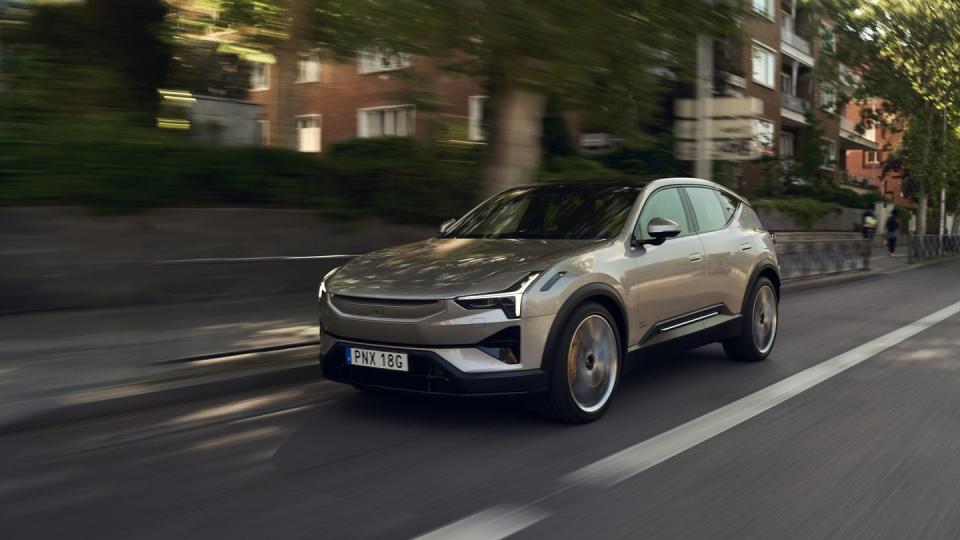
It is easier to make a car than a brand, a point proved by Polestar’s journey towards becoming an independent automaker. Having started as a motorsport team Polestar diversified into tuning Volvo road cars, was absorbed by the larger company and turned into an in-house tuning arm, and was then set semi-free in 2022 through an IPO. Volvo still owns a stake, as does Volvo’s ultimate owner, China’s Geely Group, with Polestar products sitting on EV platforms shared with both of them.
So while the existing Polestar 2 sits on the compact CMA architecture that also underpins the Volvo XC40, the new Polestar 3 graduates to the bigger, newer SPA2 platform, this shared with the forthcoming Volvo EX90. But while the Volvo is a bulky three-row SUV, the Polestar is smaller, sleeker, and with the lowered roofline that normally brings the title crossover. It also has the sort of "look at me'" bodywork that happens when the boss is also a car designer, Polestar CEO Thomas Ingenlath having previously been head of design for Volvo.
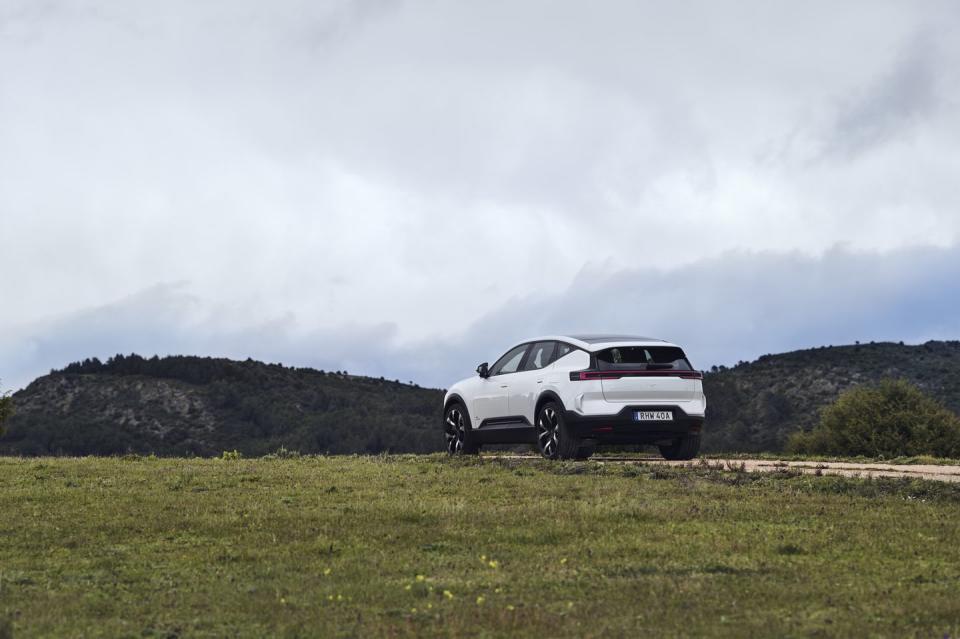
In the flesh the Polestar 3 is more striking than handsome. There are lots of cool details, including the aerofoil section at the leading edge of the hood and the full-width rear lightbar at the back. But the narrowness of the LED headlights and lack of a conventional grille deny it a characterful face; the front panel covers a radar module and a forward-looking camera, but also makes it look as if the car is wearing a mask. (A more powerful LIDAR module will also be offered as an option, allowing for higher-level semi-autonomous operation.) Having a longer wheelbase than the Polestar 2 does give the 3 much more graceful side-on proportions, and the air-shaping bodywork and wing element above the tailgate give an impressively slippery 0.29 coefficient of drag.
Power comes from a huge 107 kWh battery pack which will be standard on the launch cars, as will all-wheel drive. Two power outputs will be offered, with the regular Dual Motor making system peaks of 483 hp and 620 lb-ft and the extra-cost Performance pack increasing those figures slightly to 510 hp and 671 lb-ft, as well as bringing some chassis and styling tweaks. The Performance also gets bigger 22-inch wheels and a range reduction, which is forecast to fall from 315 miles for the standard car to 279 miles. DC fast charging at rates of up to 250kW is supported.
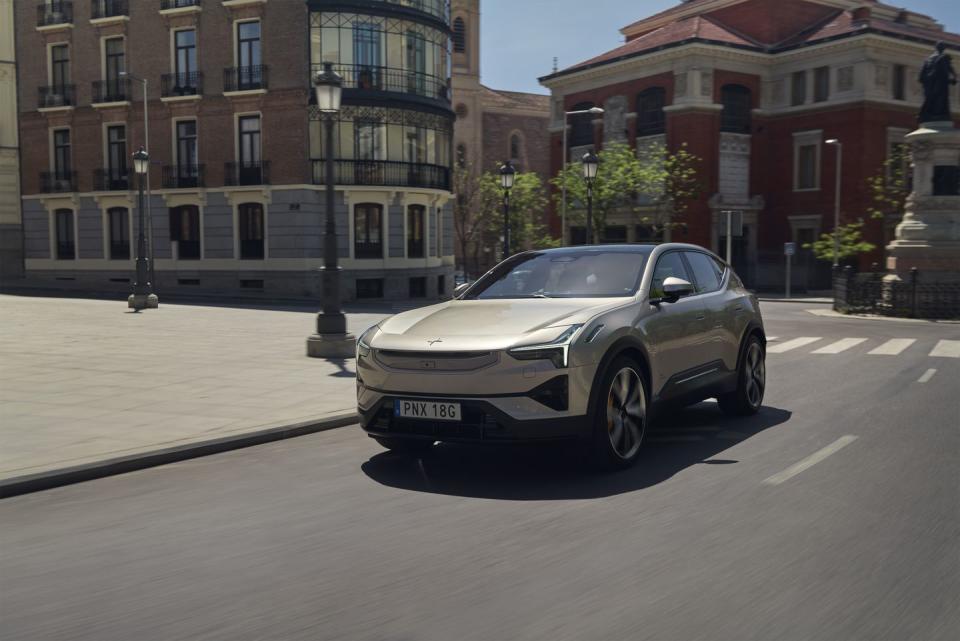
The cabin is big on both space and Swedish minimalism. Only having to accommodate two rows of seats means there is plenty of legroom for all occupants, with what will be a standard panoramic glass roof giving plenty of light and an impression of space. Trim quality is high, although with environmental data on the front seats reporting on the carbon emissions of the material chosen. Perhaps a buzzkill for anyone picking the leather.
Polestar hasn’t gone to Tesla levels of switchgear culling, but it is close. The Polestar 3 still has a column stalk for its turn signals and wipers, plus a volume dial on the center console. But almost everything else needs to be controlled either through two small touch-sensitive panels on the steering wheel or the vast 14.5-inch portrait touchscreen in the middle of the dashboard. This is running Android Automotive OS, and although the crisply-rendered display itself looks great, swapping between functions feels too complex. There are shortcuts for some functions, but even doing something as simple as adjusting the regeneration level required a multi-stage dive into the UI.
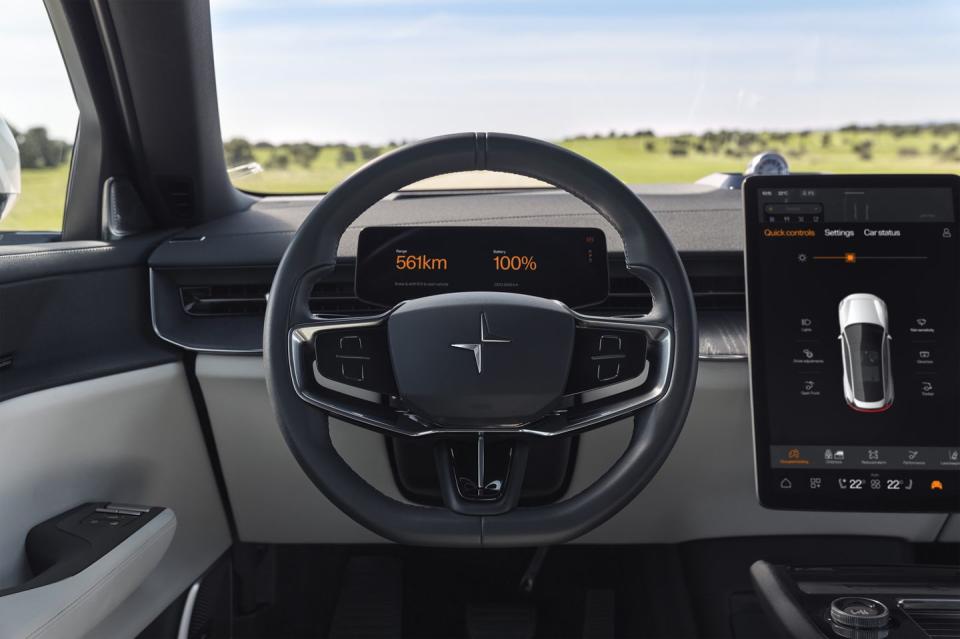
Fortunately the Polestar 3 is good to drive. Air suspension is standard from launch, although what is likely to be a steel-sprung, rear-wheel-drive base version will follow later. The dual motor cars also get a twin-clutch torque biasing rear differential, this apparently the first one fitted to an EV. Made by BorgWarner, this operates on the same principle as the active diffs of high-performance combustion cars like the Ford Focus RS and Aston Martin Vantage, with two electro-hydraulically activated clutch packs, one for each wheel. These can progressively engage to vary the amount of torque going to each side, and in the Polestar 3 can also fully disconnect to turn it front-wheel drive to improve efficiency when cruising.
The torque biasing works so subtly it is invisible most of the time, without any of the edgy, about-to-slide feel that is often programmed into such systems. At highway cruising speeds on the Spanish Autopista there was no sense of the lack of rear-drive; the clutches can reengage in fractions of a second when required. On twisty country roads the Polestar 3 felt lighter and more willing to turn than something so big and weighing around 5900 lbs should do, resisting understeer in tighter turns and feeling secure and stable in faster corners.
Even with standard adaptive dampers in their firmest setting, the Polestar 3 still felt pliant over rougher road surfaces. The air suspension varies ride height, allowing both improved clearance for mild off-roading but also lowering at speed to improve aerodynamics. But even with the chassis hunkered down there was still sufficient suspension travel to allow the car to absorb bumps rather than trying to fight with the road surface. Cruising refinement was excellent, too. The Polestar 3 feels like a quality item.
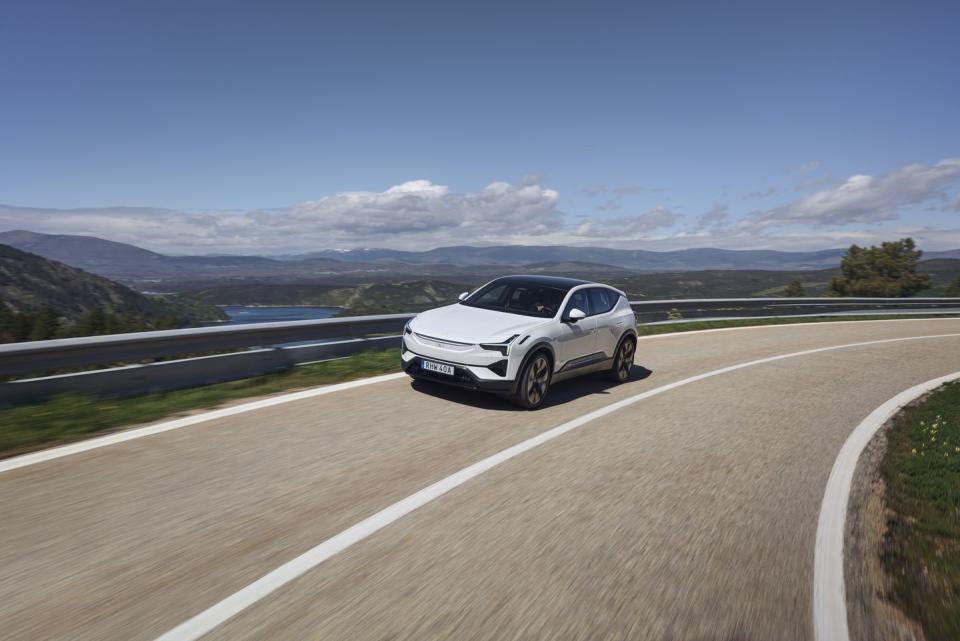
Quantifying EV acceleration subjectively is always hard, with both the regular and Performance version of the Polestar 3 feeling plenty fast when unleashed. You get quick, immediate reactions, but without the neck-snapping brutality of the most savage rivals. What stands out is acceleration staying sharp beyond the 80 mph-ish point where even punchy EVs often start to hit the treacle. Polestar claims a 130 mph speed limiter for both variants, although I didn’t get the chance to confirm the existence of this. For context, power and official performance numbers for both variants fall between those of the Macan 4 EV and Macan Turbo EV, which probably corresponds to where in the market Polestar would like it to be.
There is a geopolitical complication to getting the Polestar 3 to the U.S. The recently announced 100 percent tariff on Chinese-made EVs coming here has left Polestar exposed. The early examples of the 3 coming here have been built in Chengdu in Sichuan province. Production will be switching to the new Volvo plant at Ridgeville, South Carolina, later this year for obvious reasons. Prices will remain unchanged, running from $74,800 including destination for the cheapest version.
Polestar still has a way to go until it gains the widespread recognition of an established auto brand, but models like the 3 should help it get there. It definitely doesn’t feel like another Volvo remix.
You Might Also Like

 Yahoo Autos
Yahoo Autos 